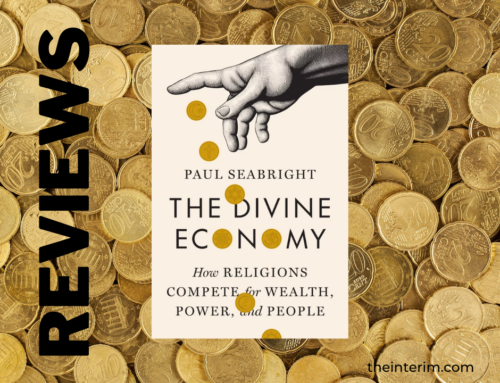On the way home from the theatre, after seeing The Lion the Witch and the Wardrobe, I was troubled with doubts. I had heard from various sources, just as I had about the Greatest-Christian-Movie-of-All-Time-that-Will-Change-Your-Whole-Life-and-Convert-the-Heathen-Liberals-and-Probably-Cure-Cancer (aka, The Passion of the Christ), that Narnia was going to be the answer to our wildest evangelistic dreams. The mainstream media’s anti-Christian fortification had finally been breached and Christian themes could once again hold prominent places in movies. The Word was finally going to get out.
Maybe I’m missing something.
As a film, even as an exciting family-friendly adventure story, LWW is a fine piece of cinematic work. But I fear that what my American evangelical brethren and sisteren are looking for, what they claim to have found in the film – which was palpably present in Lewis’s book – was largely absent in the film. Yes, Aslan is the king and creator of Narnia. Yes, he is killed in a traitor’s stead. Yes, he rises from the dead and defeats evil and (his own) death.
But the question arises, or would arise in my mind were I not already a Christian and a fanatical disciple of C.S. Lewis: so what? None of this, by itself, adds up necessarily to an allegory of Christ the Son of the living God. Not without being told it does and the movie does not tell us.
I could not help wondering at the end of the film: what is so important about Aslan? Who is he? Why do the children love and trust him? Why are they willing to risk their lives for him?
I had to return to the book to assure myself that I had indeed missed something. I found that some crucial ideas are presented to the reader, but omitted or glossed over in the film.
First, the reader and the children are taught by the Professor, in one quick and easy lesson, how to think. It is the famous Three Possibilities: either Lucy, in asserting that there is a magic kingdom inside the wardrobe, is crazy, or lying, or telling the truth.
The logic is inescapable and Lewis uses it in the book to present the possibility of the miraculous, the wonderful – literally, the other-worldly. It is powerful magic that allows the reader to enter Narnia along with the children.
There really could be other worlds just around the corner like that. “Nothing,” the Professor tells the reader, “could be more probable.” This scene is not omitted in the film, but receives such short shrift that its significance is lost
But even more important information is entirely witheld from the movie audience. Aslan’s identity is given in the book by Mr. Beaver after supper. Susan asks that most crucial question, “Who is Aslan?”
“Aslan?” replies Mr. Beaver. “Why, don’t you know? He’s the king. He’s the lord of the whole wood … It is he, not you, that will save Mr Tumnus.”
Aslan, Mr. Beaver tells the children, like John the Baptist making straight the paths of the Lion, will “put to all to rights … “He is the king of the wood and the son of the great Emperor-beyond-the-Sea. Don’t you know who is the King of the Beasts? Aslan is a lion – the Lion, the great Lion … he isn’t safe. But he’s good. He’s the King, I tell you.”
The movie is careful to leave out the answer to the crucial question, “Who do men say that I am?” Without it, there will only be the ever-reliable mainstream media to tell neo-pagan viewers that they were supposed to see Christ in Aslan.
Lewis’s books have never been out of print and LWW has sold approximately 91 million copies in dozens of languages. The real hope is that the movie will boost sales of the book and may even trigger a revival of parents reading what was once the preserve of children.
But it would be a shame if the focus was laid entirely on the presence or absence of a Christ figure. There is much in the film to praise, even acknowledging that it is, in essence, only a children’s fantasy adventure.
Narnia, as a mythic country, was made real with the film’s extraordinary effects, costumes and armour. In it, Father Christmas gives the children their gifts and says they are tools, not toys, because Narnia is real. There was no cop-out in the end, no waking up to find the children’s adventure had all been a dream. Narnia reminds us that life is not a game – it asks for real commitment, real sacrifices, genuine bravery and valour.
Chesterton said that the great myths awaken a longing for wonder, the deep and child-like desire of the heart to yearn for great things. It quietly asks the question, “Why cannot these things be?” This instinct to desire a transcendent more is as palpable in the film as it was in the book.
The allure of Narnia is that while it is a magical realm, one of fantasy and unicorns, centaurs and enchantments, it is a believable world. It reformulates Chesterton’s famous plea as a possible truth, not, “Why cannot these things be?!” but, “What if these things are?!”
What if life were not the grey, flat, utilitarian, material, grown-up world we have been taught it is? What if there are other worlds? What if real life is, in fact, a great adventure? The possibility is one that, once taken seriously by adults as it is by children, could change the whole world.




